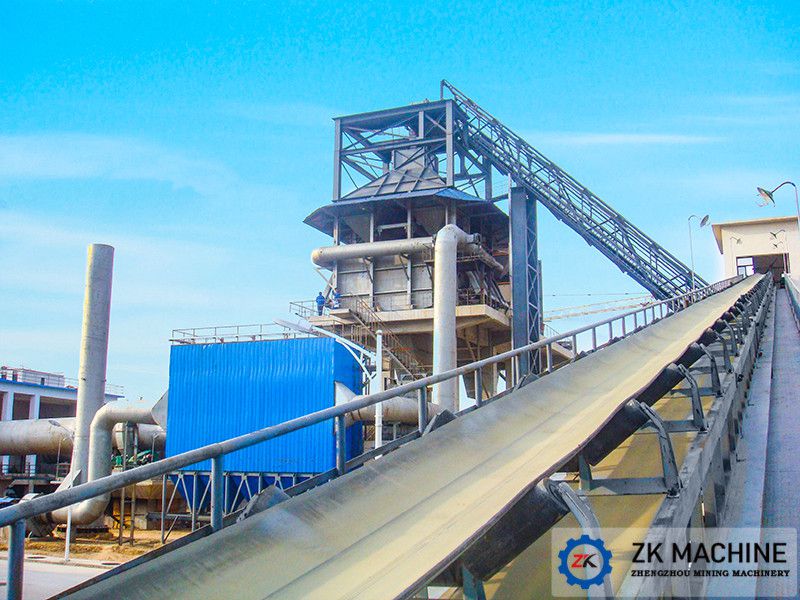1. Introduction to TDⅡ belt conveyor
DTⅡ fixed belt conveyor is widely used in various industries such as metallurgy, mining, coal, building materials, chemical industry, ports, etc. due to its large conveying capacity, simple structure, easy maintenance and strong versatility. The working environment temperature of this type of conveyor is generally between -25 and 40℃, and the material temperature generally does not exceed 60℃. If a heat-resistant rubber belt is used, high-temperature materials below 120℃ can be conveyed; when conveying materials containing acidic, alkaline, oily substances and organic solvents, oil-resistant, acid-resistant and alkali-resistant rubber belts or plastic belts are required. At the same time, according to the conveying process requirements, a single machine or multiple machines can be combined into a horizontal or inclined conveying system for conveying various bulk materials or finished items with a loose density of 500 to 2500kg/m3.
2. Working Principle of TDⅡ Belt Conveyor
The traction member and bearing member of DTⅡ fixed belt conveyor are an endless belt, which is wrapped around the drive roller and redirection roller at both ends of the frame, thus forming a closed circulation loop. When the transmission device drives the drive roller to rotate, the friction between the drive roller and the belt drives the belt to run; after the conveyed material is added to the rubber belt from the guide trough, it is transported to the unloading device at the head as the belt moves, and finally the material is unloaded through the unloading port.
3. Structural Features of TDⅡ Belt Conveyor
DTⅡ fixed belt conveyor is mainly composed of head transmission device, tail tensioning device, conveying belt, roller group and frame, etc. The specific structural features are:
1. The transmission device is divided into open transmission device and closed transmission device. Among them, the open transmission device is mainly composed of an electric motor, a coupling, a brake, a reducer, etc., and is generally fixed on a base welded from steel sections (power within 100kW) or installed on a concrete base (power above 115kW); the closed transmission device, namely the electric roller, is a driving device that places the motor and the reduction system in the roller. The device has the characteristics of compact structure, safe operation, small space occupation, light weight, and neat appearance.
2. The roller is a device used to support the materials carried on the conveyor belt and ensure the stable operation of the conveyor belt. According to the characteristics of the conveyed materials and the actual conveying requirements, the optional rollers include groove rollers, parallel rollers, self-aligning rollers, forward-inclined groove rollers, return rollers, etc.
3. At the feeding point, a buffer roller is set to reduce the impact of the material on the conveyor belt; among them, the spacing of the buffer rollers is customized according to the loose density, block size and drop height of the conveyed material.
4. A group of grooved self-aligning rollers is set for each different number of roller groups (determined according to the conveying characteristics) of the load-bearing branch and the unloaded branch to ensure stable and reliable operation of the conveyor belt.
5. According to the working conditions of the belt conveyor and the tension, tension stroke and tension position of the conveyor belt, spiral tensioning, car-type tensioning and vertical tensioning can be selected according to the needs.
6. There are two types of cleaners: head cleaners and empty section cleaners, which are mainly used to clean the materials adhered to the conveyor belt; among them, the head cleaner is installed at the unloading roller to clean the sticky materials on the working surface of the conveyor belt; the empty section cleaner is installed at the front and lower part of the redirecting roller or at the redirecting roller of the vertical weight device to clean the non-working surface of the conveyor belt.
7. According to the different conveying materials, guide troughs of different structures and specifications are set at the feeding point to ensure that the materials falling from the chute are concentrated in the middle of the conveyor belt before reaching the conveyor belt, thereby improving the conveying efficiency.
















